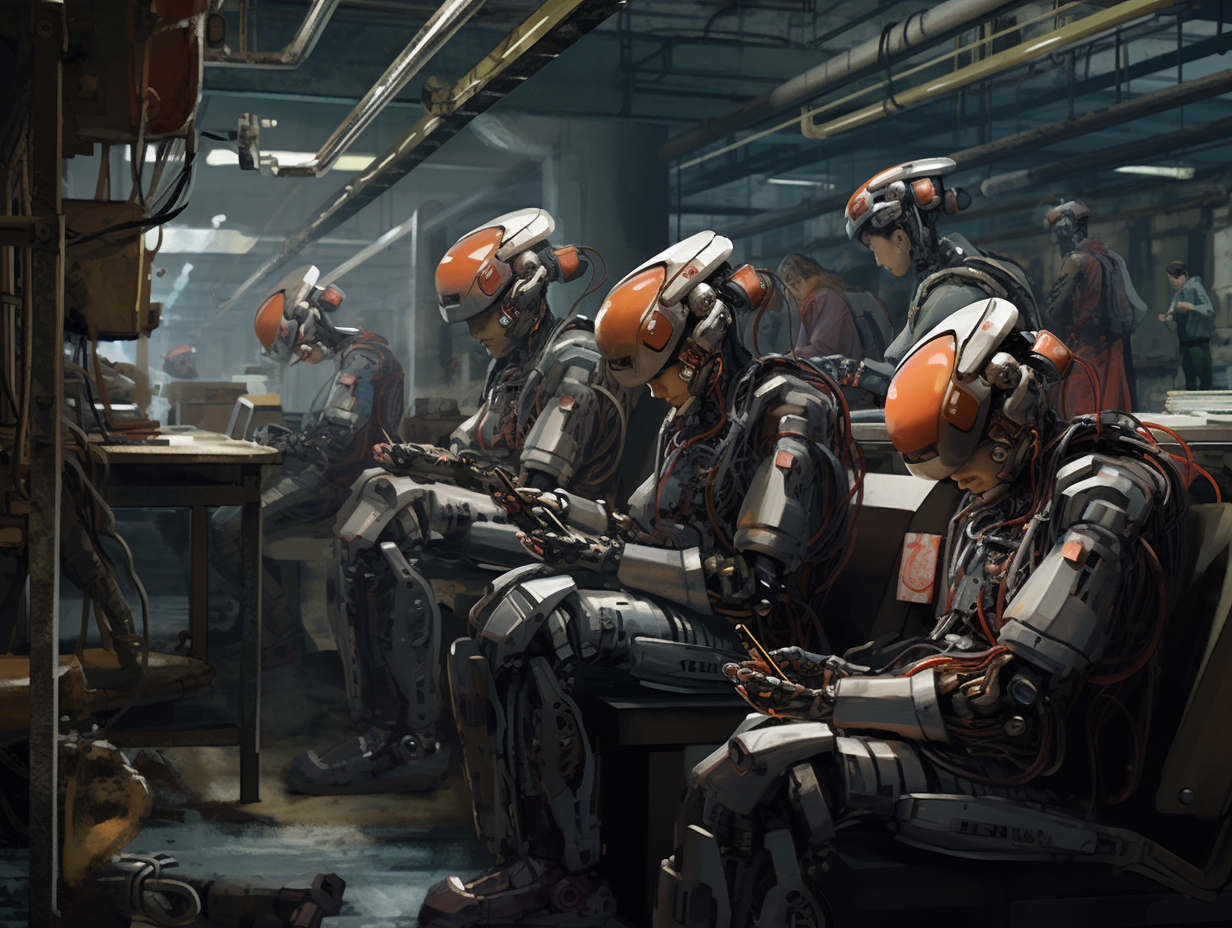AI Fundamentals - What is AI Image Generation?
What is AI image generation? 🤖

AI generated visualisation of some bored androids
AI Fundamentals: What Exactly is AI Image Generation?
As well as chat GPT and other Language Models, one of the most intriguing developments in AI that’s useful right now is AI image generation. You might have seen computer-generated art or deepfake videos circulating on the internet. But what exactly is AI image generation, and how does it work? In this blog post, we’ll demystify the concept, explain what it is and isn’t, and touch on the legal and ethical considerations surrounding it.
What is AI Image Generation?
At its core, AI image generation is a process where artificial intelligence algorithms create images or visuals from scratch or based on existing data. These algorithms are designed to simulate human creativity, producing artwork, photographs, or even entire scenes without any human intervention. All of the images I use in this blog make use of this technology.
What AI Image Generation Is Not
To better understand AI image generation, it’s crucial to clarify what it is not:
-
It’s not traditional image editing: Unlike traditional photo editing software where humans manually manipulate images, AI image generation involves machines autonomously creating visuals, often according to parameters specified by the user.
-
It’s not always perfect: AI image generation is a work in progress. While it can produce impressive results, it’s not infallible and may sometimes generate imperfect or unrealistic images. Those who are familiar with the technology in practise will have seen some downright disturbing attempts to generate hands and feet from time to time.
-
It’s not always ethical: The ethical use of AI image generation is a matter of debate. It can be used for both positive and negative purposes, as we’ll discuss later. This also matters because companies can experience a significant amount of negative publicity from making use of AI image generation for commercial purposes.
Legal and Ethical Risks
AI image generation comes with legal and ethical considerations that need to be addressed:
-
Copyright and Intellectual Property: Using AI to generate images raises questions about copyright ownership. If an AI creates an image based on existing copyrighted material, who owns the rights to it? This topic is still being explored in legal frameworks around the world.
-
Deepfakes: AI image generation can be used to create deepfake videos and images, where faces are superimposed onto different bodies or scenes. This poses significant ethical concerns, such as misinformation and privacy violations. This is probably one of the main areas that AI is creating obvious controversy around the world right now.
-
Ethics and attribution: While I’m not going to do this topic justice in such a brief summary, there are rightful concerns around the provenance of AI generated art’s source material. Do some of these generators make use of artwork without appropriate attribution and remuneration? That’s widely claimed and likely to be the case in some circumstances.
How AI Image Generation Can Be Used
Despite the potential risks, AI image generation also has many valuable applications:
-
Art and Design: Artists and designers can use AI to explore new creative avenues, generate unique artwork, and inspire innovation in their fields. Concepts can be quickly created to get stakeholder buy-in before artists, architects and other creatives embark on a more lengthy and expensive creative process.
-
Content Creation: AI image generation can assist in producing visuals for websites, advertisements, and marketing campaigns, saving time and resources.
-
Scientific Visualization: Scientists and researchers can use AI to generate visual representations of complex data, making it easier to understand and communicate their findings.
-
Entertainment: In the entertainment industry, AI image generation can be used to create stunning special effects, realistic video game environments, and virtual worlds. Such step-changes in technology have previously allowed smaller and smaller studios to produce entertainment for a wider audience than before. It could also be the case here.
In conclusion, AI image generation is a fascinating technology that holds promise and potential, but it also comes with significant legal and ethical considerations. As we continue to explore and develop this technology, it’s crucial to strike a balance between innovation and responsible use, ensuring that it benefits society while minimizing harm. Understanding AI image generation is important to make informed decisions about its application in your business, while the debates around ethics and legality continue.
